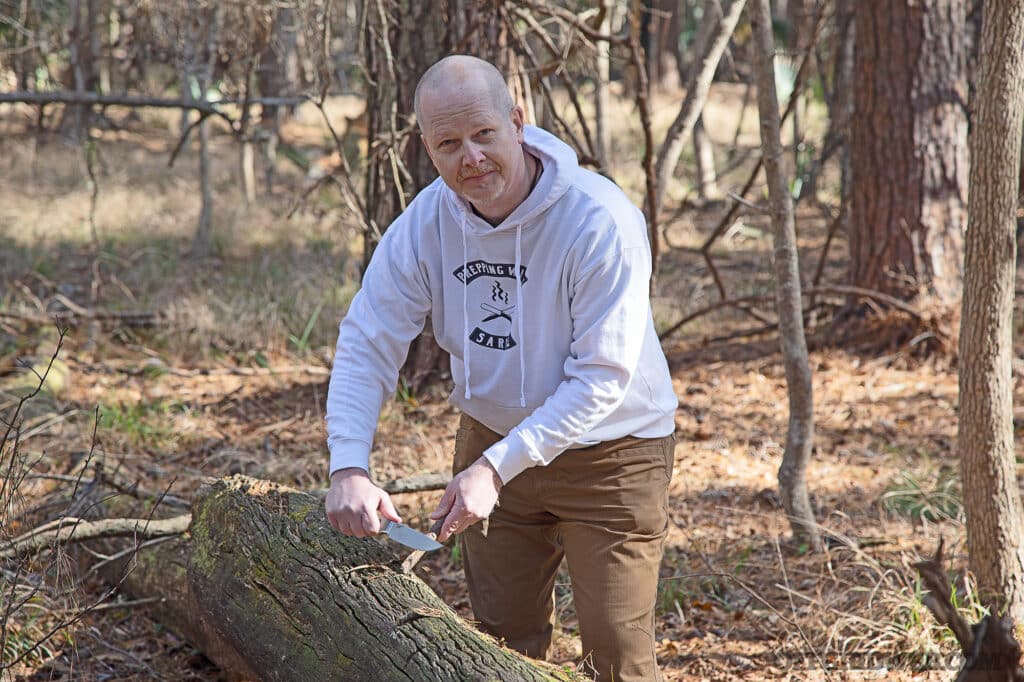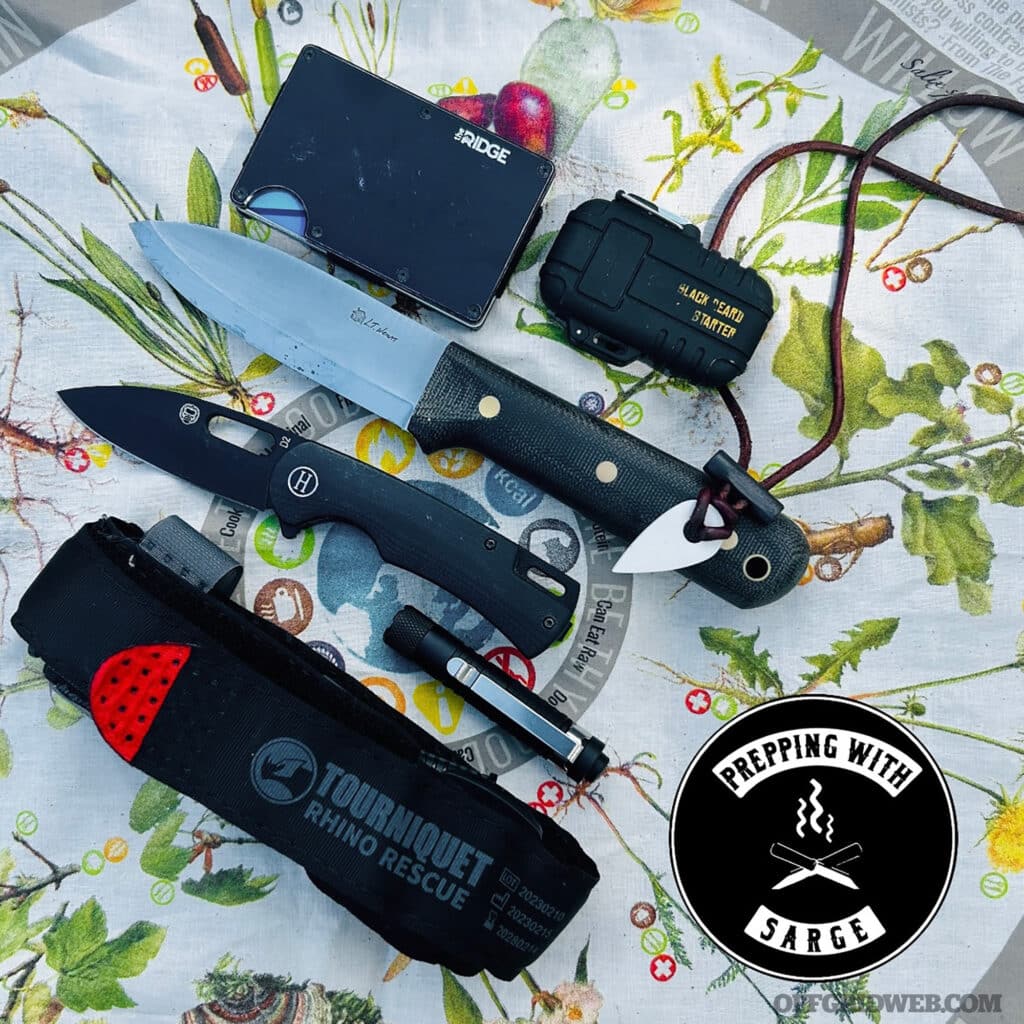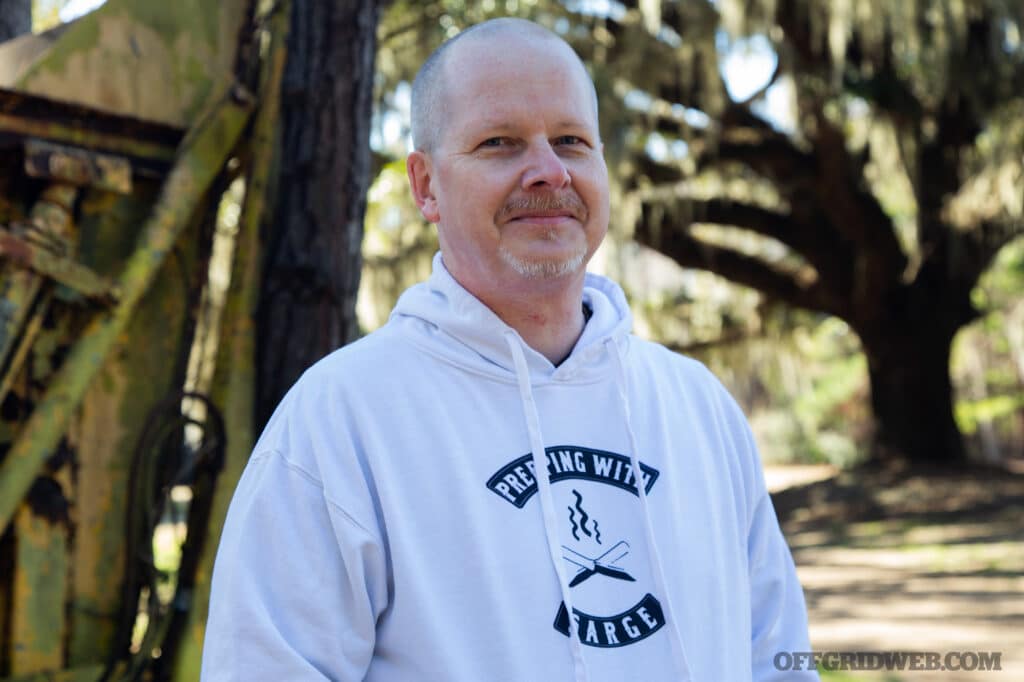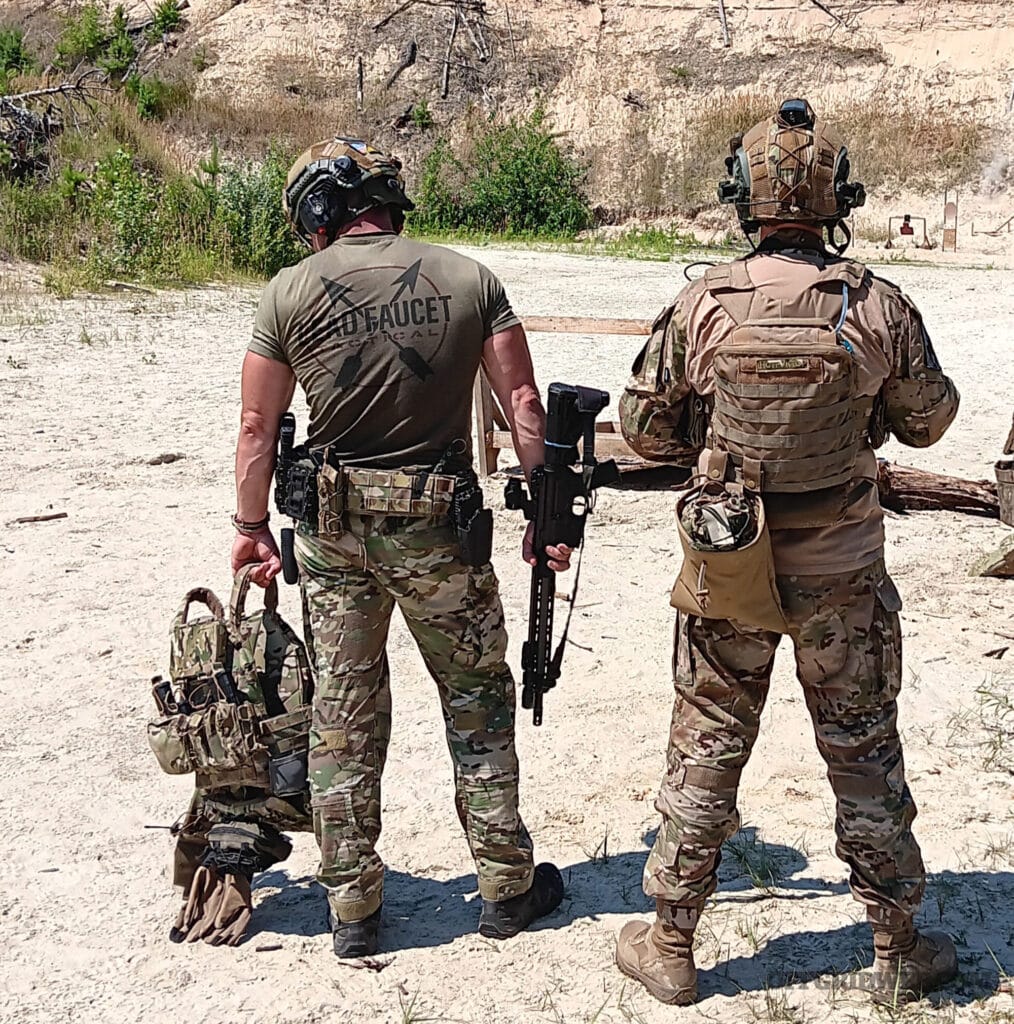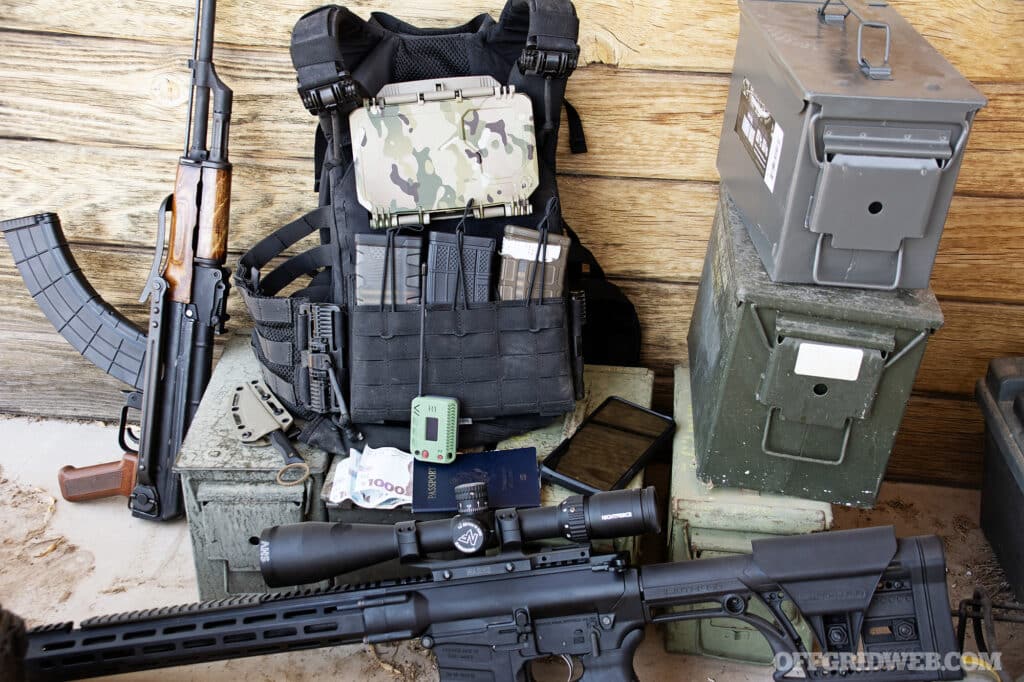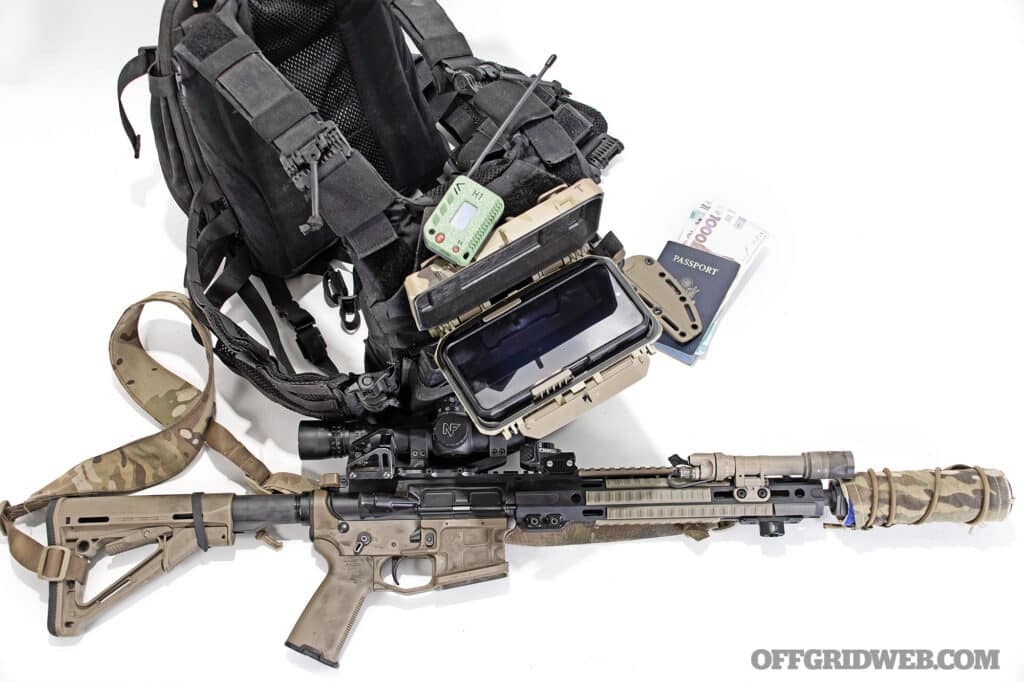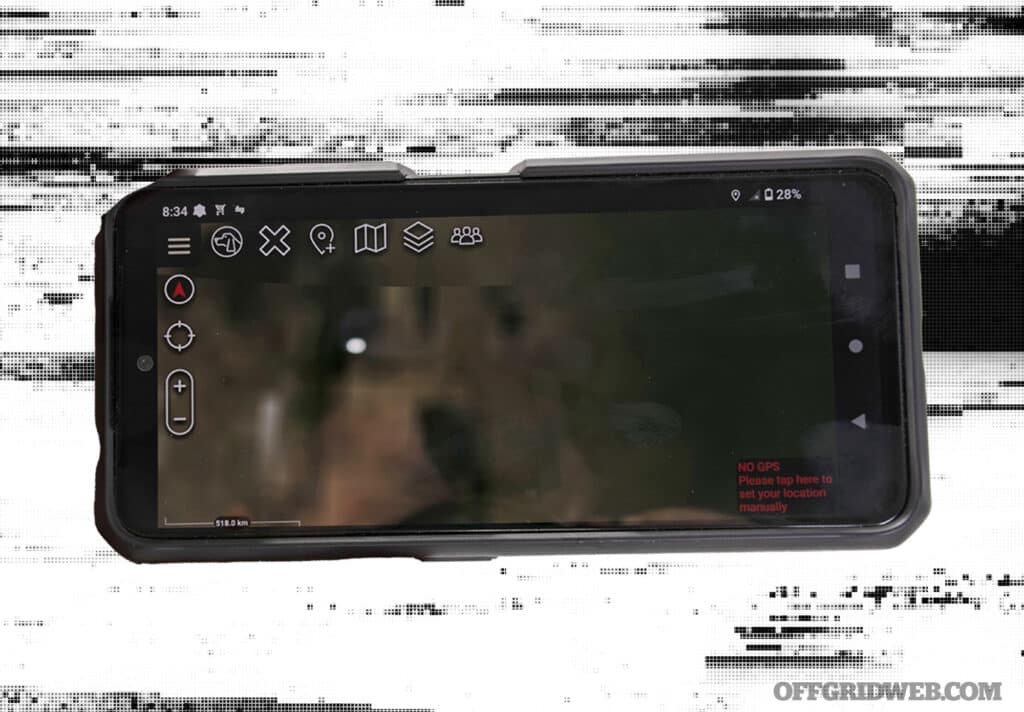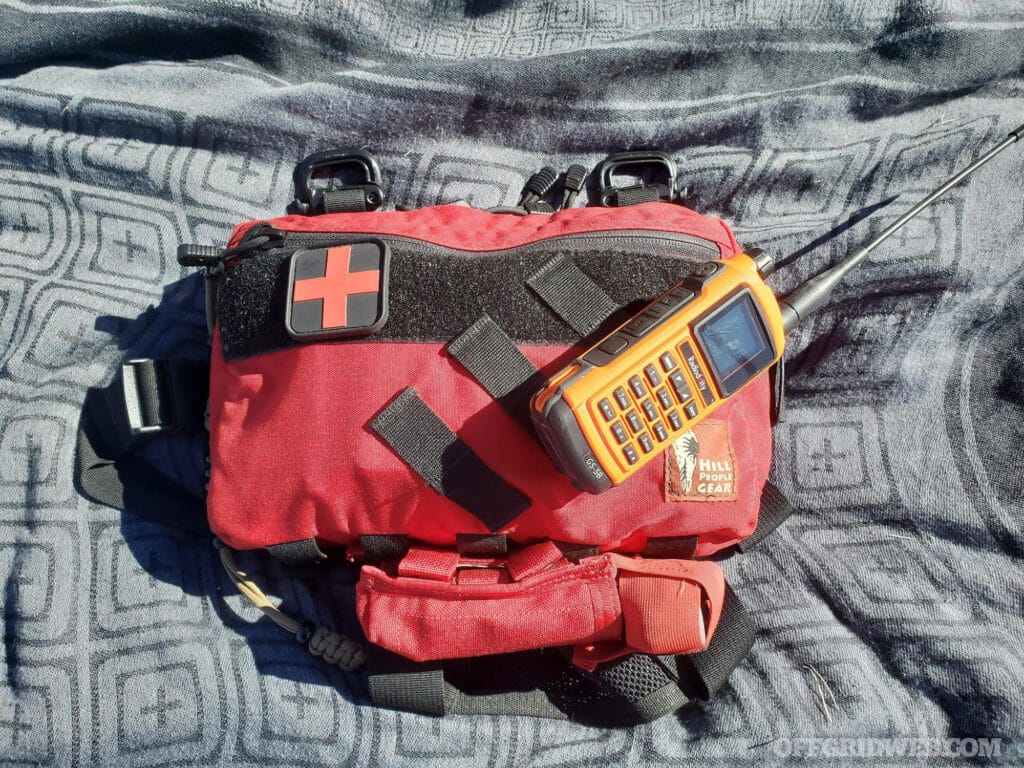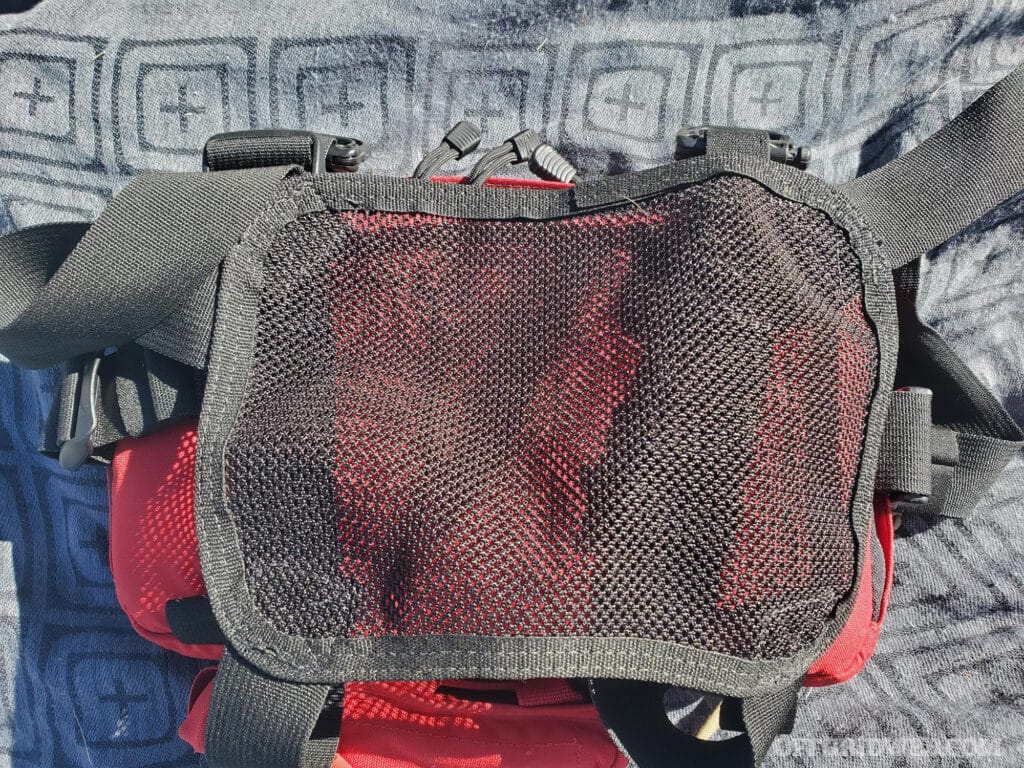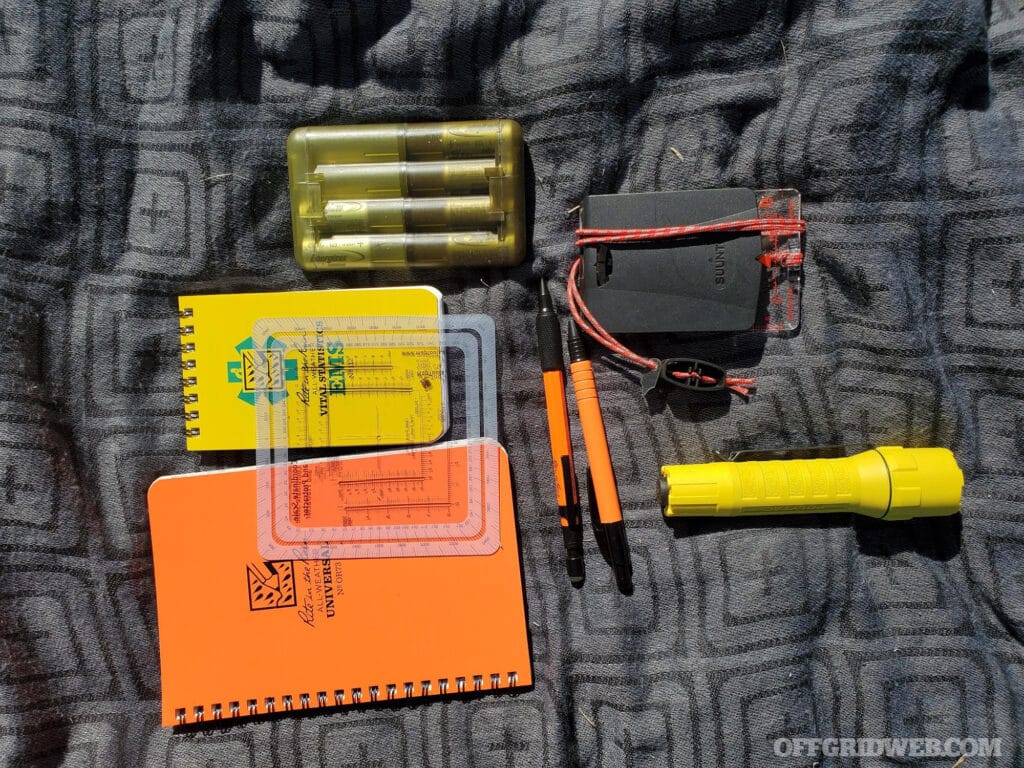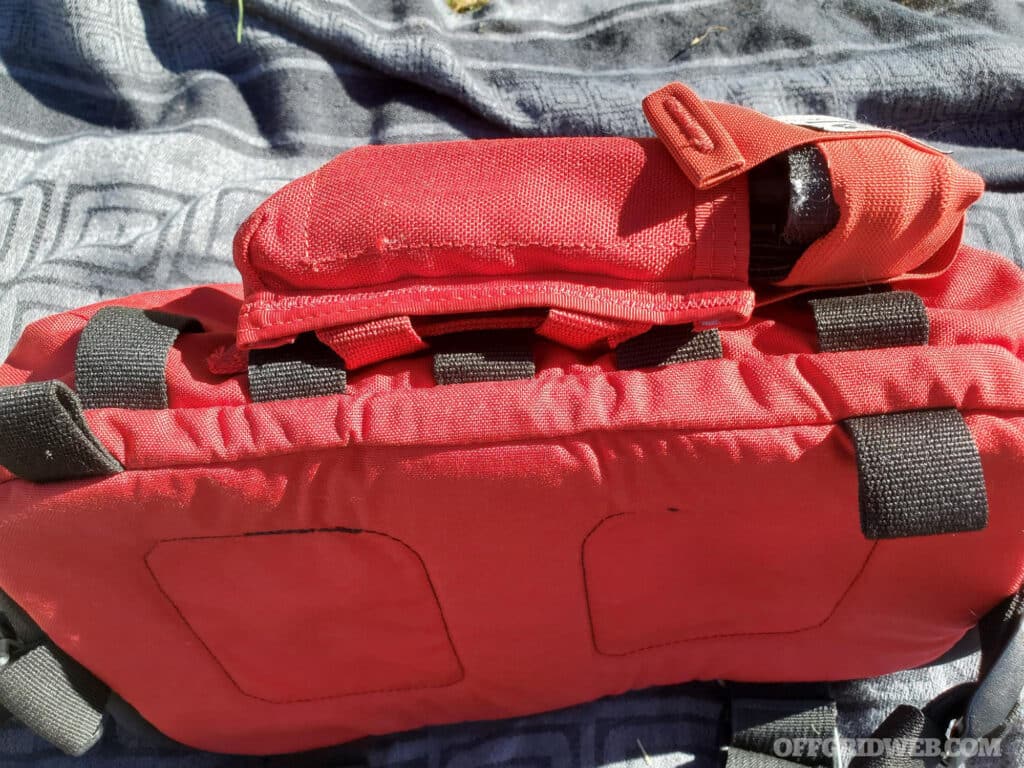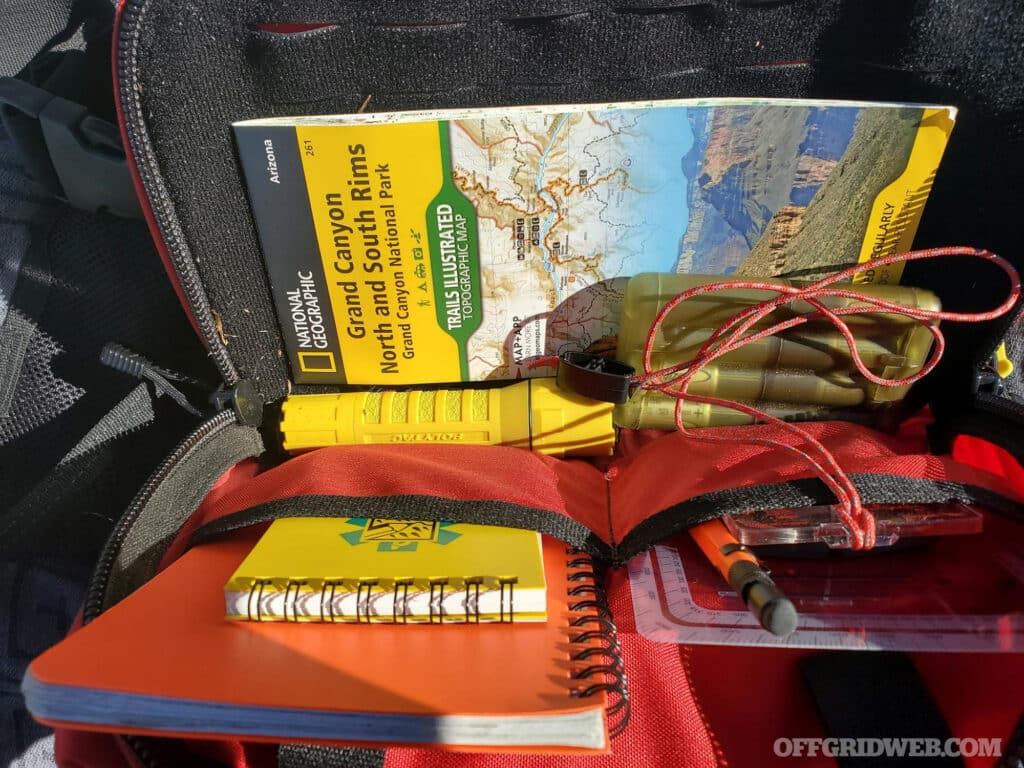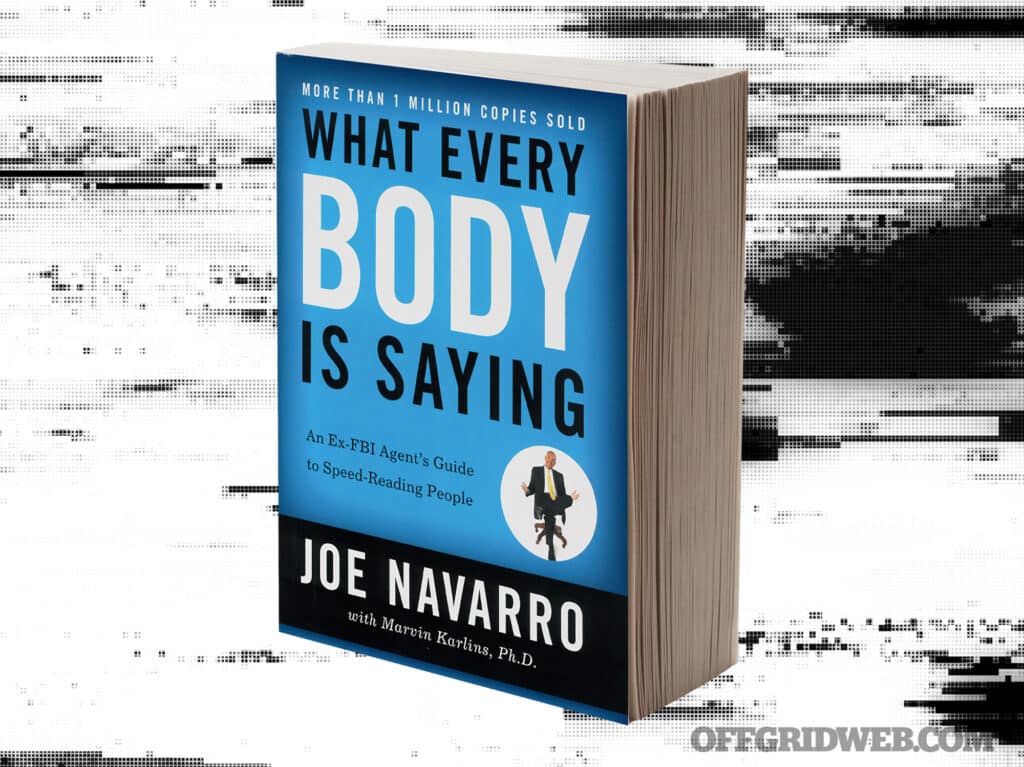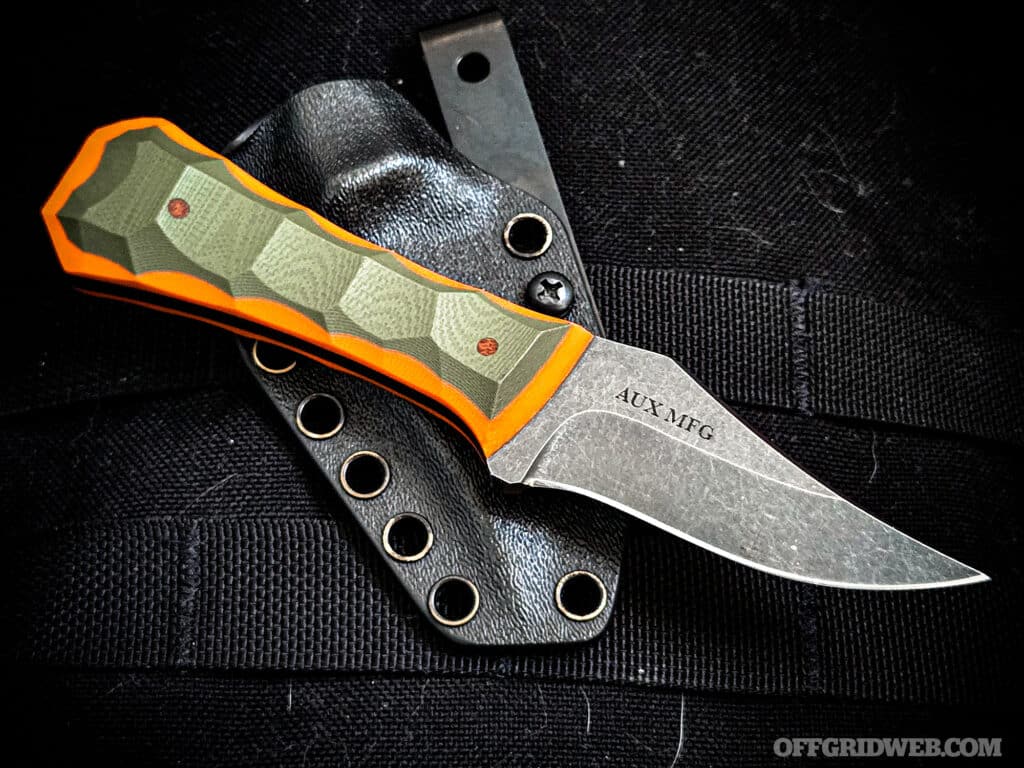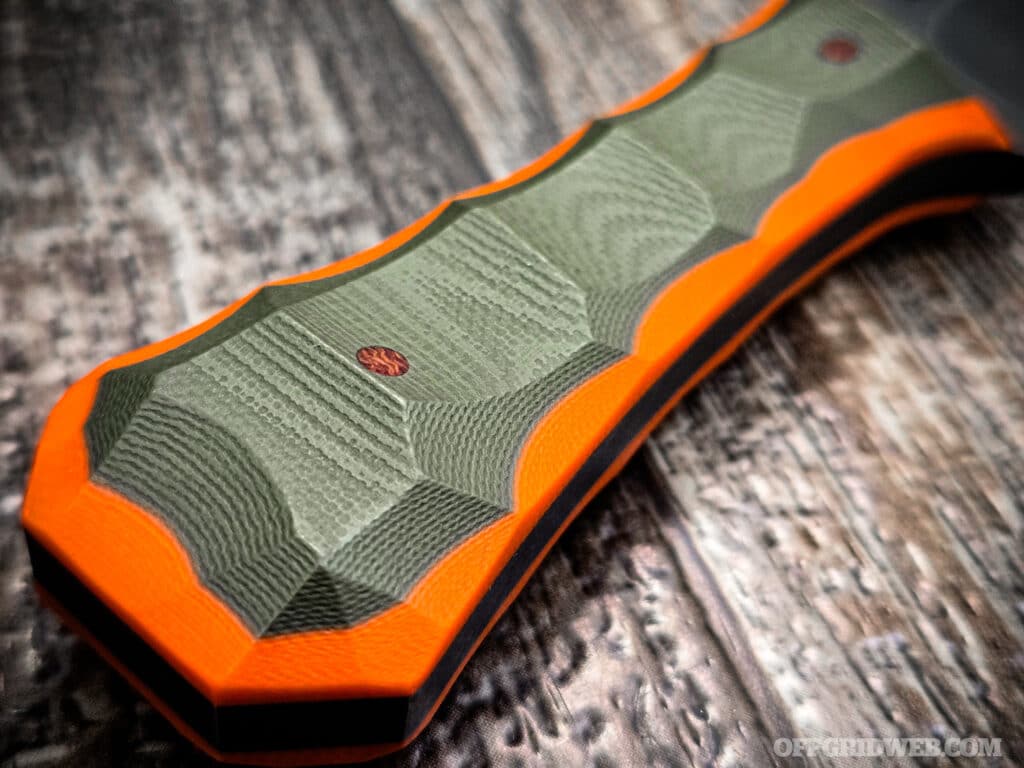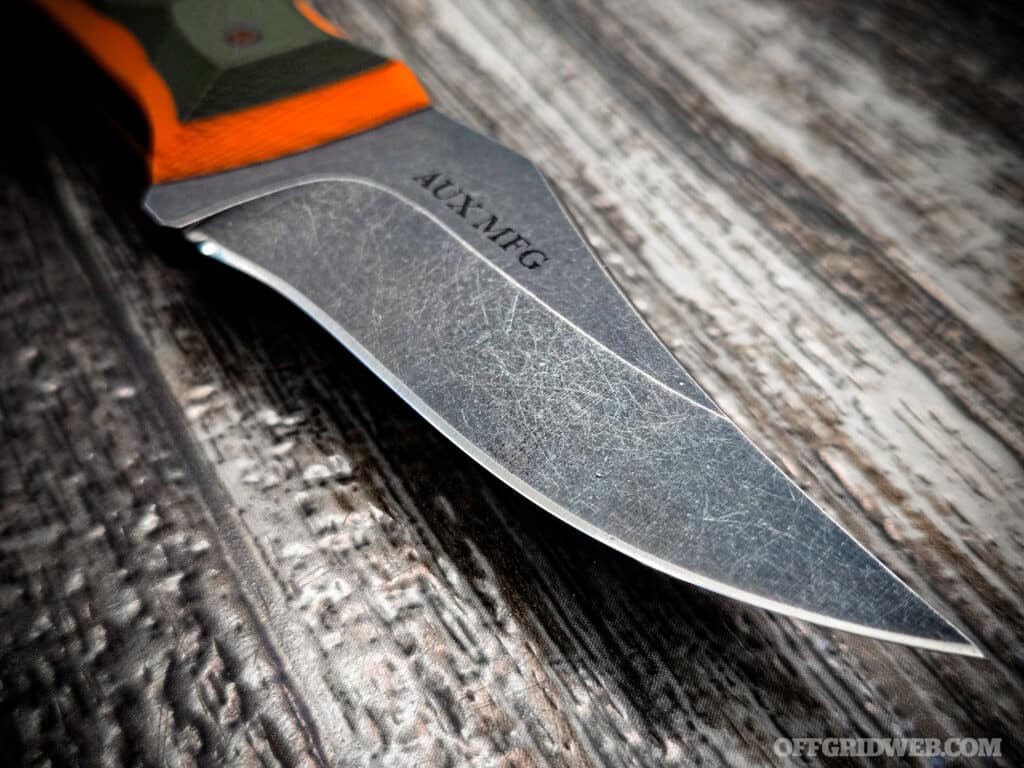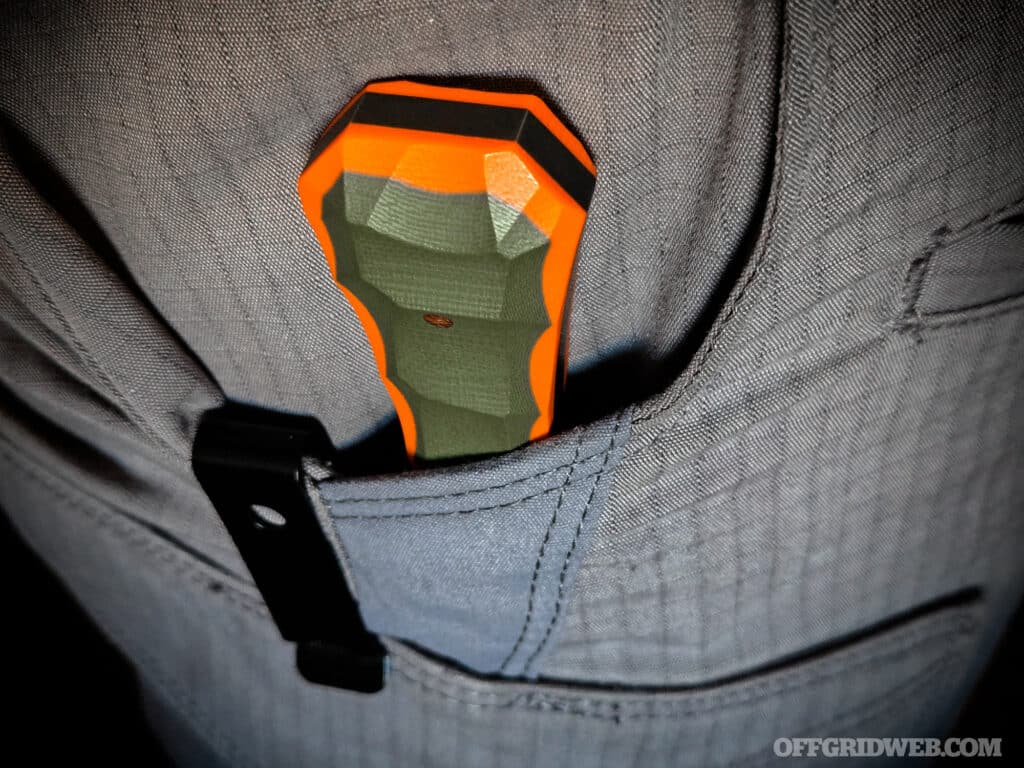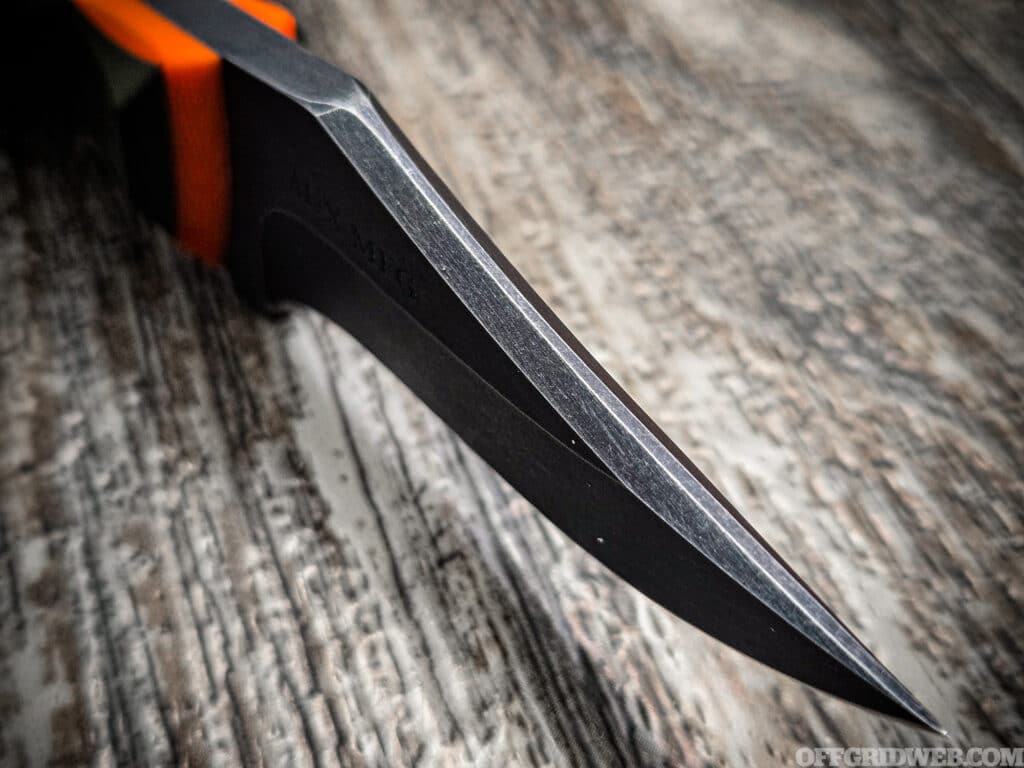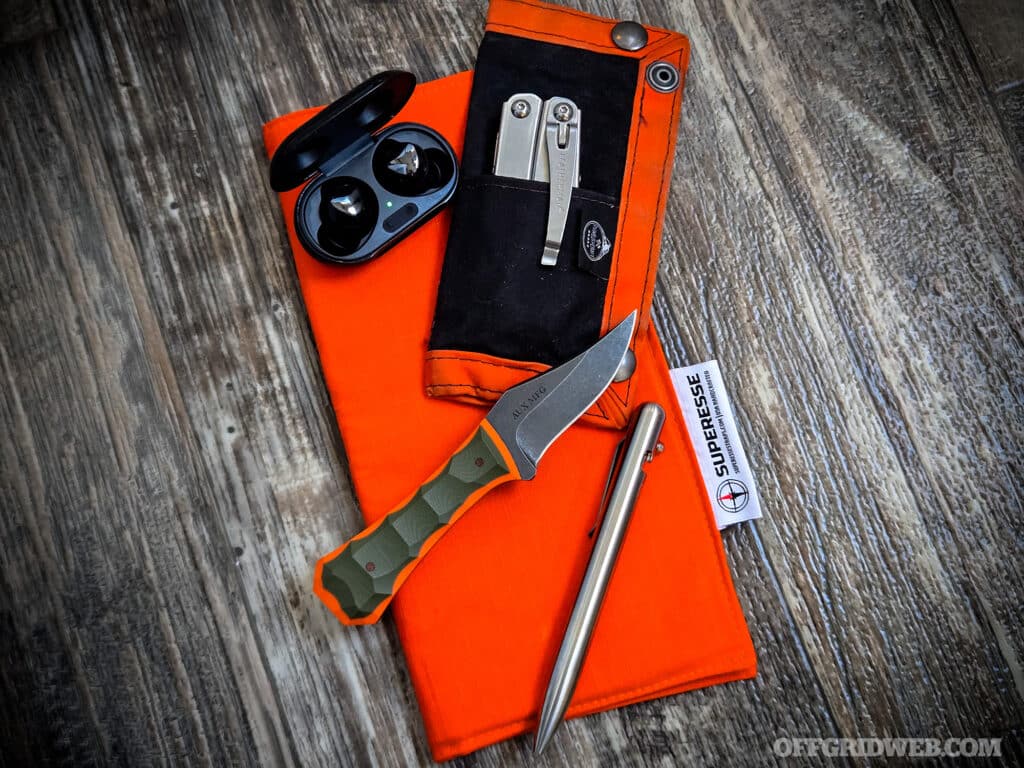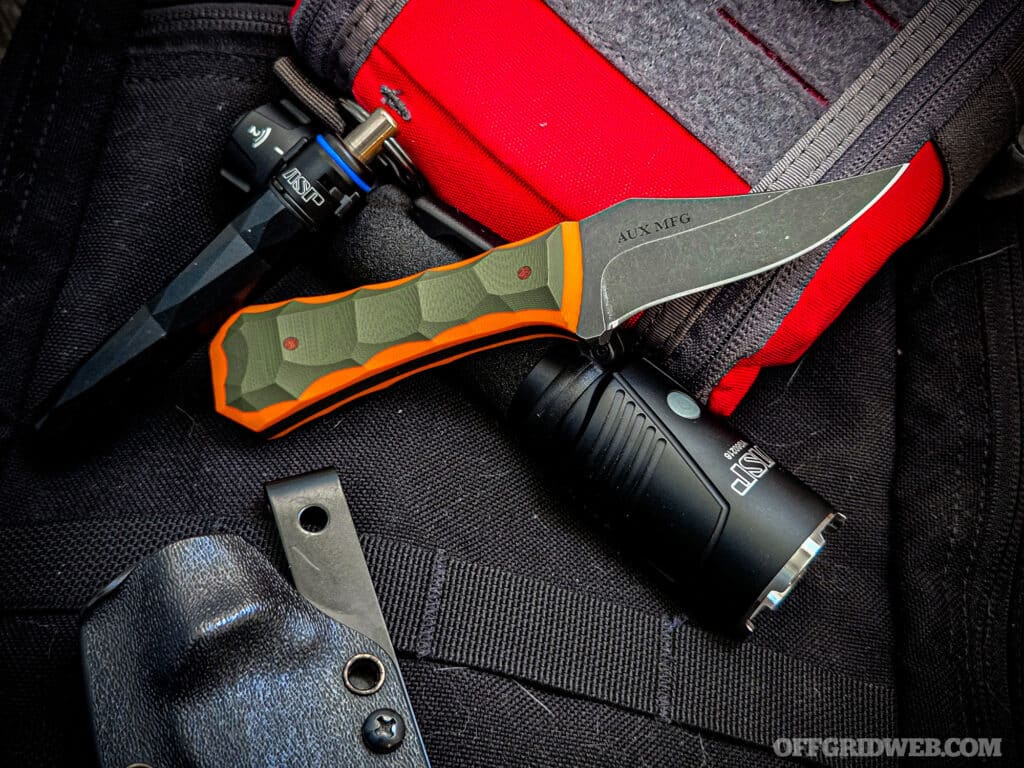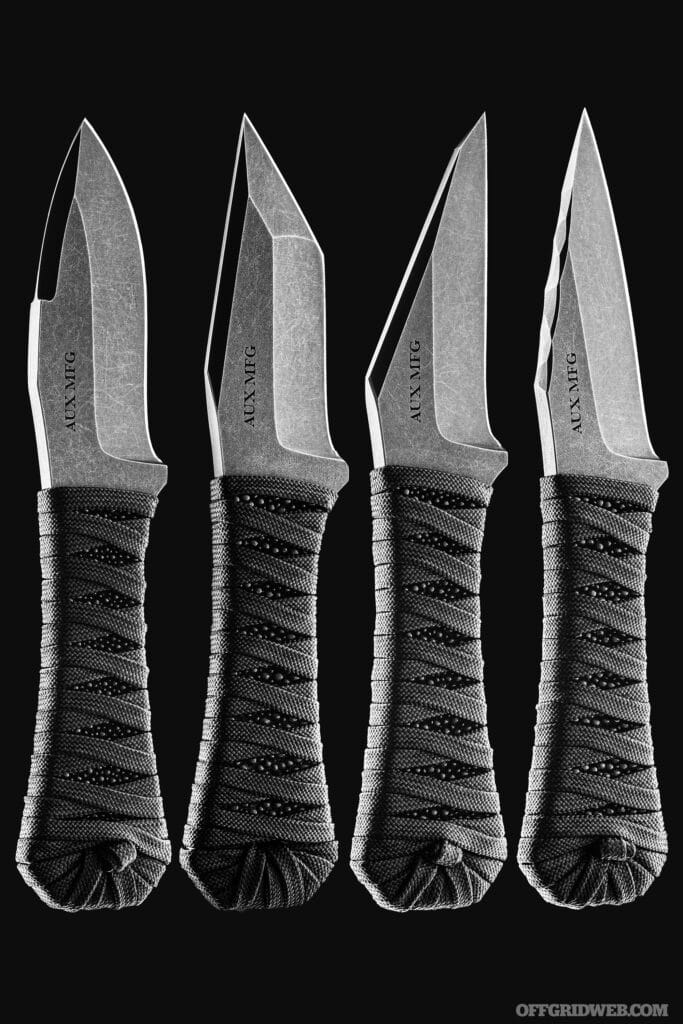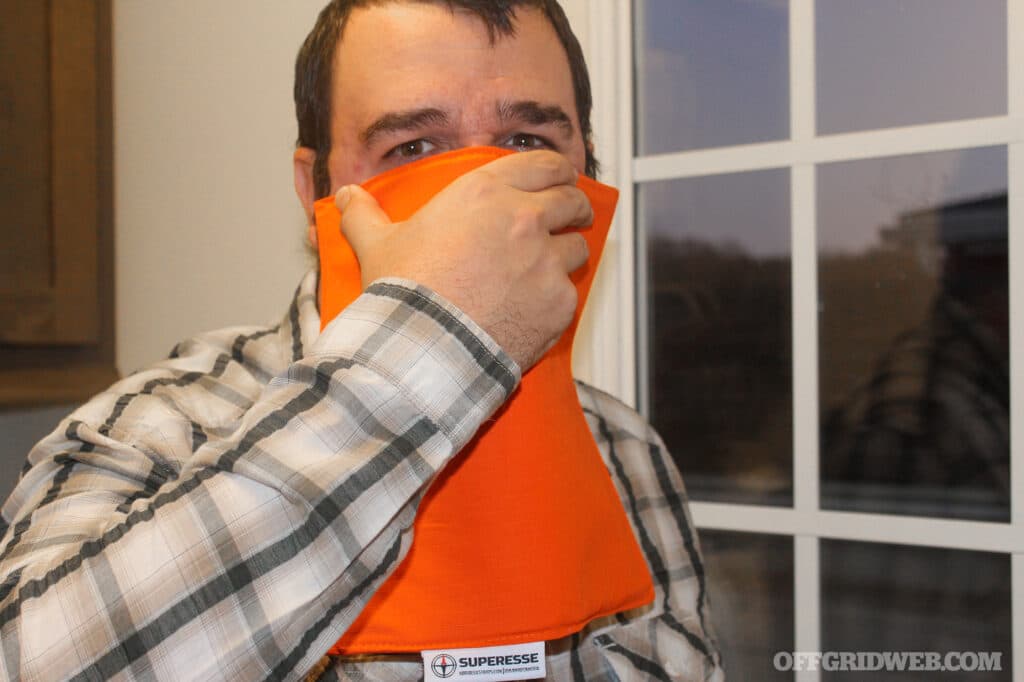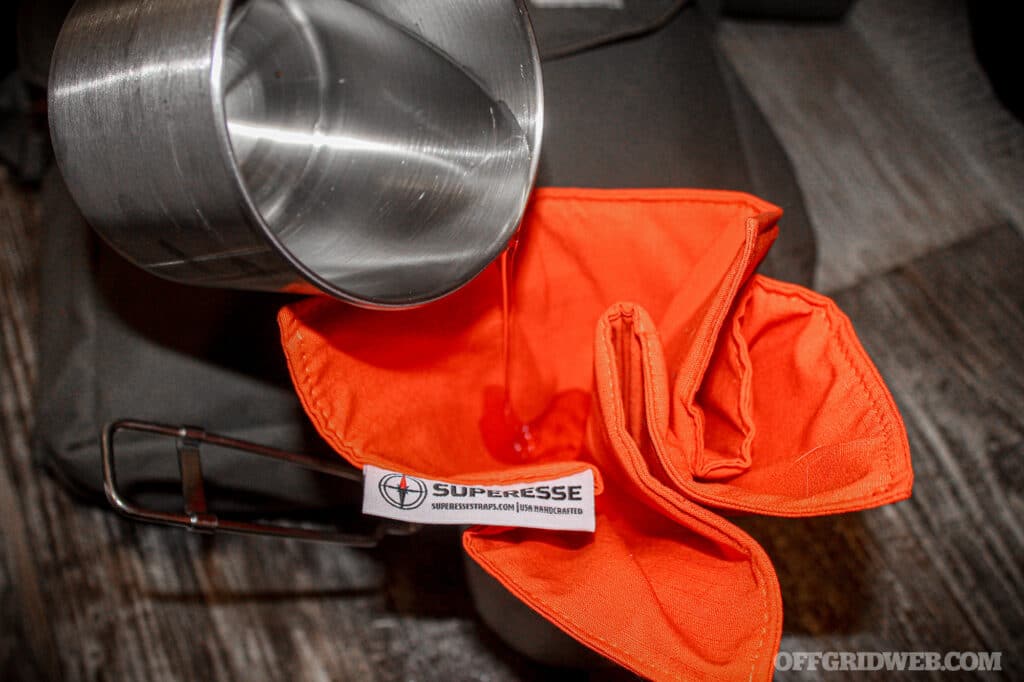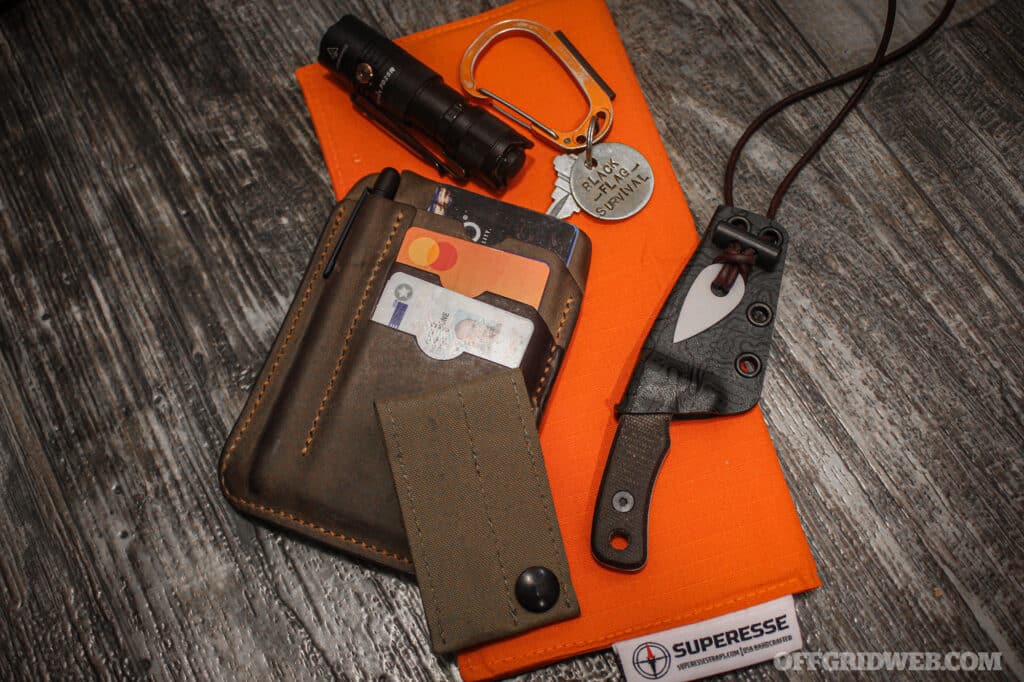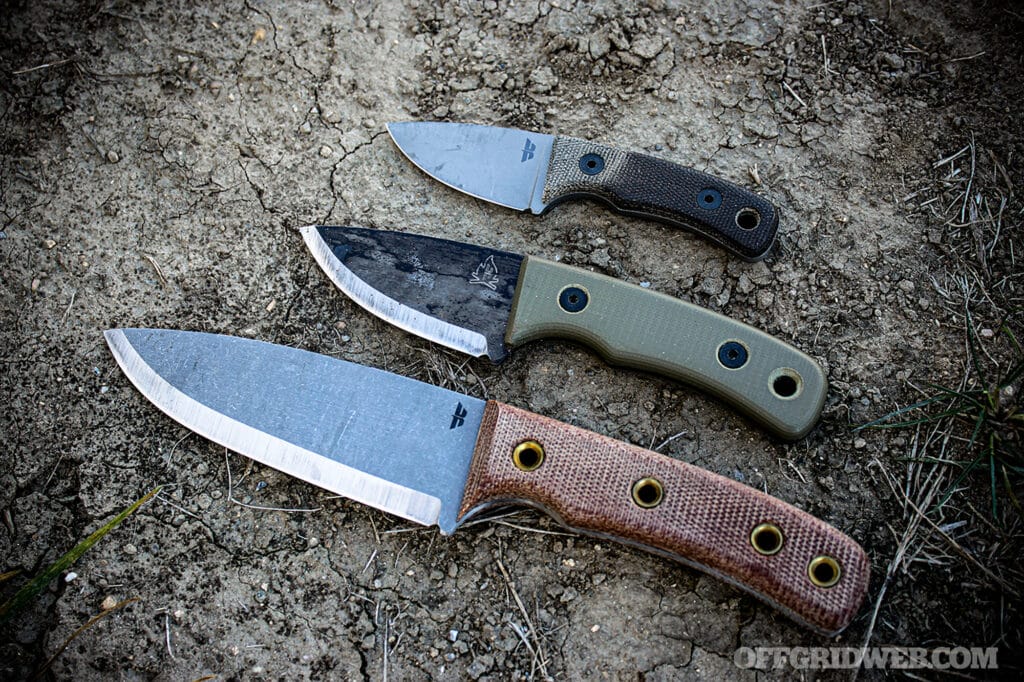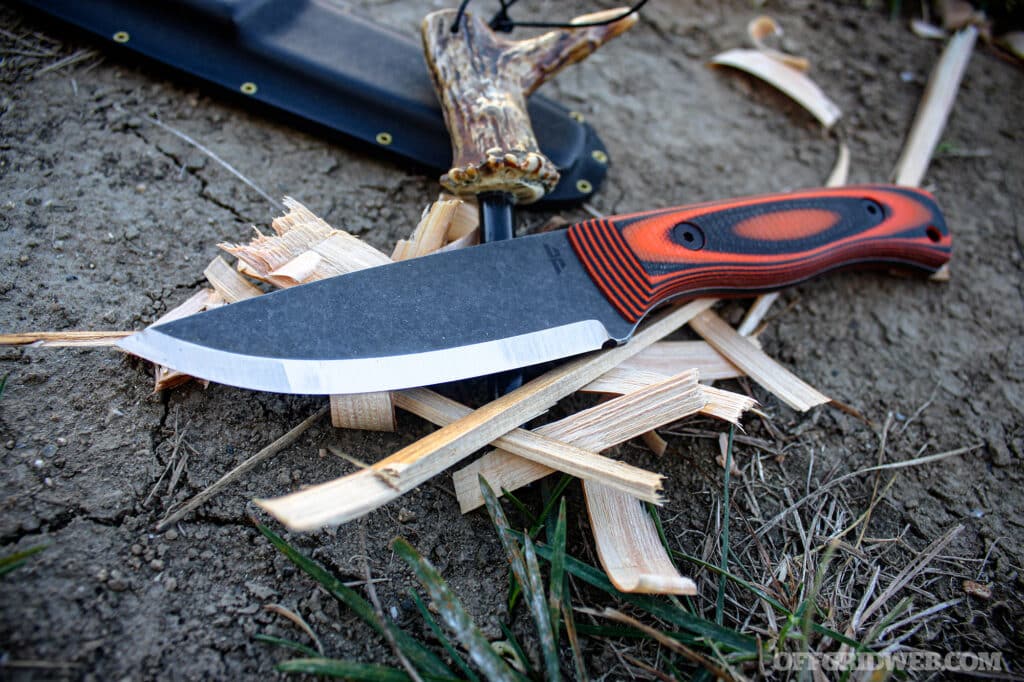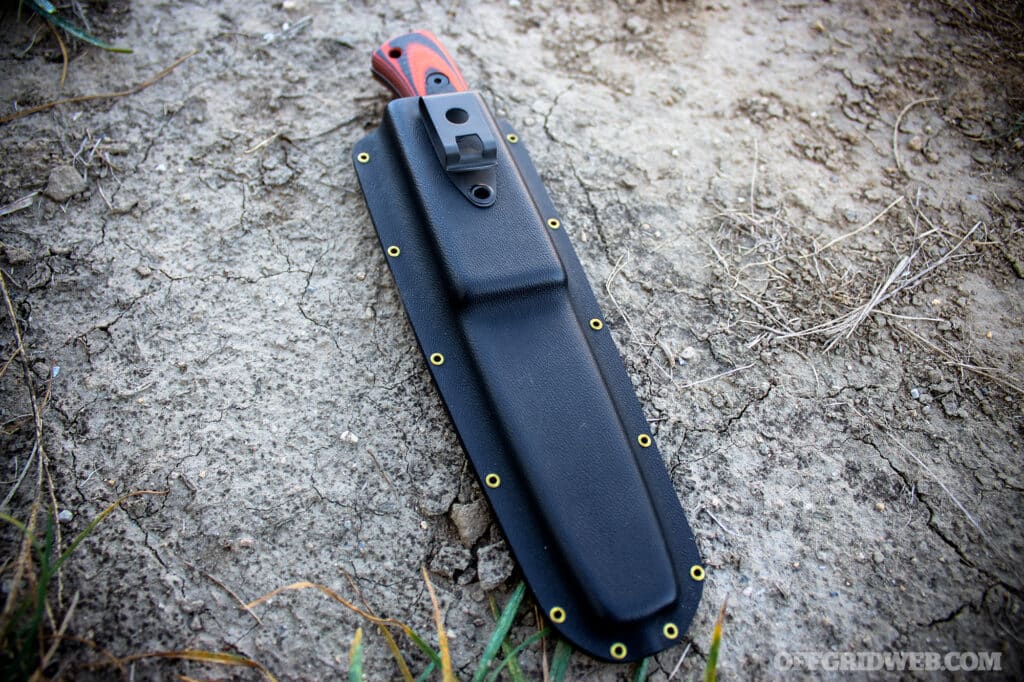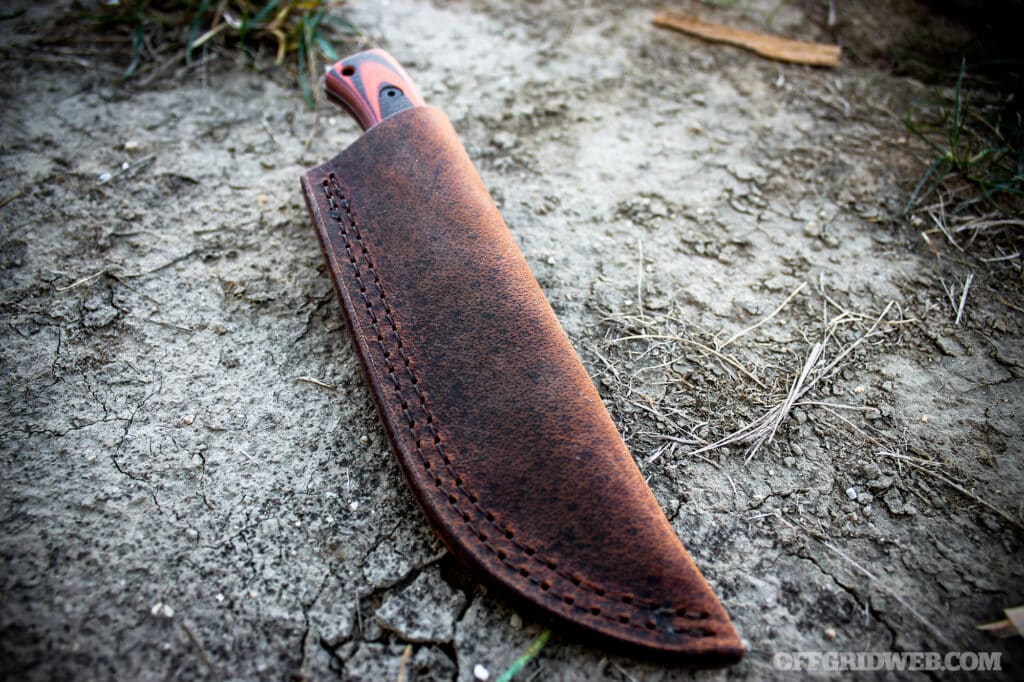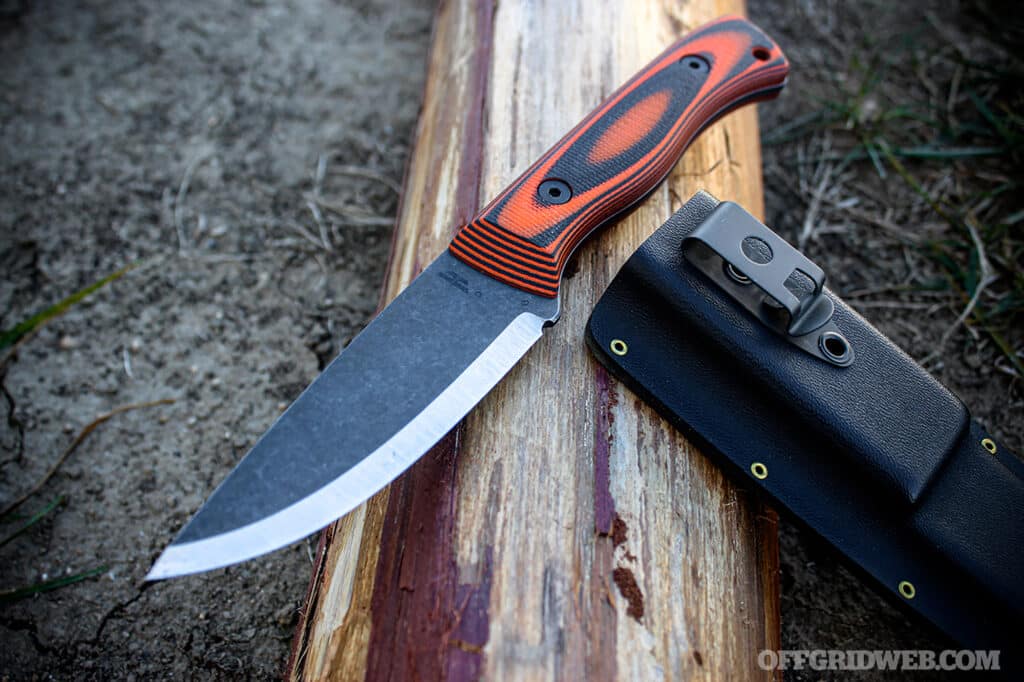In This Article
Emergency evacuation, often termed bugging out, is a hugely popular topic in prepper and survivalist circles. As with many areas of preparedness, people tend to focus on the gear more than anything else. Lists abound of what you should have in your bug out bag.
That’s just one element of the overall equation, though. There are four components to a proper bug out or evacuation plan.
- When to leave
- Where to go
- How to get there
- What to bring with you
While they’re all important, that first one is arguably the most critical. If you don’t time it right, the rest of those elements may not matter a whole lot.
Now, the interesting thing here is that all of those elements are applicable in virtually any evacuation scenario. While we typically think of this in terms of bugging out from home, dangerous situations can arise anywhere, including the workplace as well as when we’re just out in public.

Learning that wildfires are getting closer to your neighborhood is an obvious cue that you’ll want to seek a safer location.
Bugging Out When Disasters Hitting Home
Here’s the thing: Sheltering in place at home is ideal, all other things being equal. That’s where the bulk of your gear and supplies are located. You’re familiar with the area, and odds are that’s where you’ll be the most comfortable. But there are situations where home is not where you’ll want to stay. Depending on your location and overall situation, any number of realistic threats could result in home not being safe.
Red flags are alert signals indicating that something might be about to kick off, and that you may want to be somewhere else if it does. It’s important to give serious thought as to what realistic scenarios could impact your area and make your home unsafe to occupy, even if you only bug out temporarily.
Being caught in an area where martial law has been declared isn’t recommended. One red flag that indicates a martial law declaration might be on the way would be trustworthy reports of National Guard troops being moved into the area.
Martial law isn’t guaranteed to happen based on that, but it should get your attention. Interpreting red flags is sort of like reading body language. One indicator by itself is all but meaningless. You have to look at it in context and as just one part of the overall picture.
The past can help predict the future, which allows for potential red flags to be noted. If things got dicey in the area each time a wildfire came within 20 miles of your neighborhood in the last two decades, hearing that another one is planning a visit is a red flag that you might want to get out ahead of the crowd.
Give some thought as to the risks to your area, such as natural disasters or civil unrest. From there, develop a list of red flags for each of them that will push you toward loading up the family truckster and heading bugging out of town for a bit.
You also need to determine how you’ll see or hear about these alert signals. These might involve TV news reports, radio broadcasts, monitoring amateur radio traffic, and consulting online sources.
One of the positive attributes of social media is the ability to obtain localized intel, if you know where to look. Many areas have a “scanner page” on Facebook. These are usually city or county based. One or more people will routinely monitor radio traffic involving police, fire, and rescue dispatches and post those calls to Facebook.
These aren’t anything official, just private citizens sharing publicly accessible information. While the comment threads often turn into dumpster fires, the raw data can certainly prove useful.
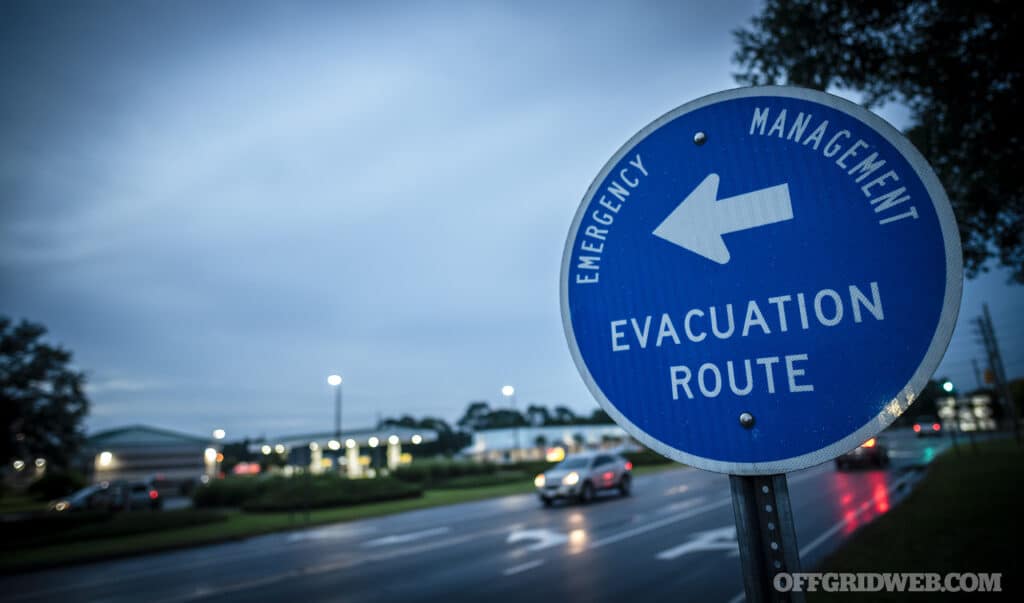
Knowing evacuation routes will help you avoid the crowds if you need to get out of town quickly.
Pro Tip: With a little digging, you should be able to acquire a copy of your county’s emergency management plans for various potential disasters. These probably include evacuation routes, among other bits of helpful information. These plans are a matter of public record, though they might not always be posted right on the county website.
Workplace Violence Red Flags
Here’s a fun fact. There are at least two generations out there now who use the term “going postal” without knowing the origin of that phrase. It’s become a common phrase to describe someone who is exceptionally angry and stressed, to the point to where they become violent.
What many don’t know or maybe don’t remember is that the phrase is tied to a series of workplace shootings that involved postal workers beginning in 1986. The phrase was first published in an article appearing in the St. Petersburg Times in December of 1993, but it was likely in use colloquially long before that.
Workplace violence wasn’t anything new even back in 1986, but it seemed to become much more common throughout the last few decades. Whether this is due to an actual increase in incidents or just better reporting, the fact is that it’s important to recognize red flags for potential violence at work and be ready to bug out. These bad actors are generally under a lot of stress, so that tends to be the focus for observable signs something is amiss. It’s common that these behaviors are a change from their usual workplace demeanor.
- A rapid decline in work quality or attention to detail
- They have a difficult time concentrating or staying on task.
- Others are always to blame for their mistakes.
- They isolate themselves from others.
- They hold grudges, often verbalizing a desire for those people to get hurt.
- Their attendance isn’t great. They’re chronically late or absent.
- They complain a lot about financial problems, an unrequited love interest, or other personal issue.
Other red flags that this person might be contemplating getting violent include a history of doing so elsewhere, such as having been arrested in the past for fighting, disorderly conduct, and the like.
They might exhibit an extreme fascination with weapons, well beyond what might be considered a hobby-level interest. They may try to intimidate others, sometimes with overt threats. Admittedly, these cues might not mean immediate evacuation is required. But they should warrant further observation. The concerns should also be reported to a supervisor and/or human resources for follow-up.
How do you know the person has reached the boiling point? A combination of a few of these alert signals should raise the hair on the back of your neck. Again, these are usually different from their usual behavior.
- Repetitive movements, such as pacing
- Rapid, shallow breathing, almost like hyperventilating
- A flushed or pale appearance, often heavily sweating
- Talking loudly, often combined with abusive language
- They may be shaking or trembling, seemingly enraged.
- Invading personal space is common.
Aggressive body language is also often observed just before the person kicks into high gear. They may crouch their knees a bit or turn so that their body is at about a 45-degree angle with their legs spread. Clenched fists are a strong sign that they’re about to get violent. If you see them nodding their head yes or shaking their head no, and nobody has asked them any questions, get some distance between yourself and them.
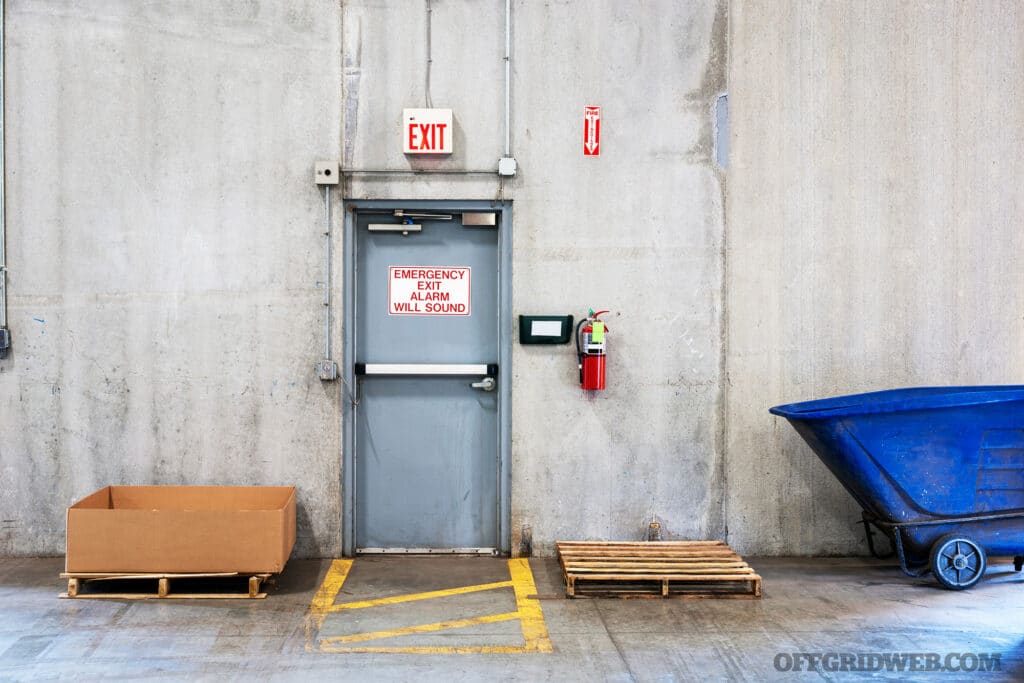
Many businesses have back doors, such as fire exits for employees. These will likely be less crowded than front doors in an emergency evacuation.
Bugging Out of Public Venues
Active shooters, riots, bombings, and other violent situations occurring out in public seem to be more and more commonplace. While we might imagine ourselves taking care of business and saving the day, the reality is that you may not have that opportunity.
In her book Becoming Bulletproof, former Secret Service agent Evy Poumpouras talks about what she calls the 3 P’s. These help to determine the potential vulnerability of a public venue when it comes to some sort of attack.
- People – the more people who are there, the greater the chance of an attack.
- Place – a single location filled with people is more vulnerable than if those people are spread out.
- Press – the higher the number of media cameras likely to be present, the more tempting the venue might be, as attention is what the attacker is likely after.
Now, none of this is to say you should avoid going anywhere that’s going to involve a lot of people in a single location, such as a concert hall, and where the media might be covering the event. The takeaway here is that the greater the vulnerability of the venue, the more alert you should be to possible red flags and the need to avoid an area or bug out.
An active shooter is one of the more difficult situations to see coming because they’re often random, at least from the perspective of the victims. One minute you’re enjoying a movie or concert, the next moment bullets are flying.
There are a couple of red flags you can watch for, though. If you see someone enter the area who looks exceptionally nervous, especially if they’re obviously armed, it might be a good idea to find some cover until you can determine if the situation is safe or you need to bug out.
Most RECOIL OFFGRID readers can likely tell the difference between the sound of fireworks and the sound of gunfire, especially indoors. If you hear the latter and you’re not at the range, that should definitely get your attention. It’s also worth noting that there are a number of reasons why you might need to bug out of an establishment that have nothing to do with violence.
For example, there have been several nightclub fires over the years where partygoers were trapped inside because they couldn’t get to an exit and ended up with tags on their toes.

Think about what would alert you to danger at this concert venue. Where would you go if something went sideways?
Bugging Out: Crowd Control
If you and your family somehow end up swept into a crowd, such as a large group of protesters, here are some tips.
Now isn’t the time to voice your dissenting opinion about their protest. There’s no need to add fuel to the fire, so to speak, especially if you have family members you want to keep safe.
Link arms with those you’re with so you don’t lose track of anyone. Trying to navigate your way through the crowd while moving in the opposite direction of everyone else isn’t likely to work out well. Instead, move at a 90-degree angle and slip across the crowd as best you can.
You’ll find there’s much less resistance that way. Work your way to a sidewalk or other less congested area, then get out of the area.
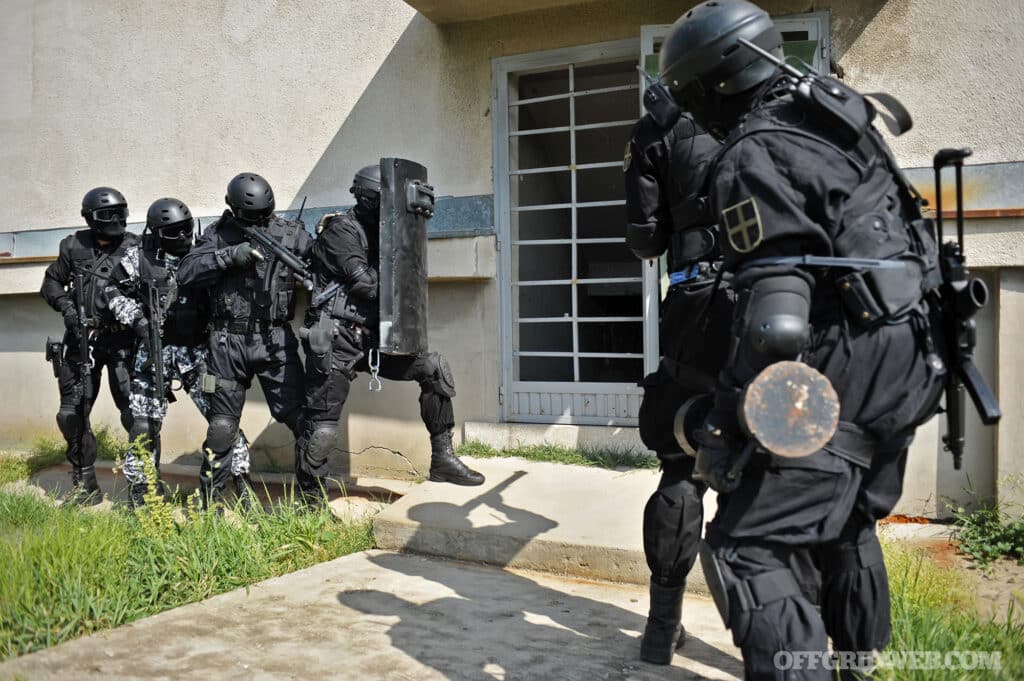
When Police Arrive
If you are present when police respond to a mass shooting or similar event, there are some dos and don’ts to follow. Bear in mind that while you know that you’re not a risk to them, they don’t know who you are. It will take a little time for them to get up to speed on what’s going on.
- DO give a description of yourself to the dispatcher, if you’re the one on the phone with them. Explain where you’re located and what you’re wearing, in addition to what’s going on. This way, officers will know to look for you.
- DON’T run toward the responding police officers, no matter how happy you might be to see them, unless you’re told to do so. Anything that looks even remotely like a threat is likely to be put down hard and fast.
- DO put down any weapon you may be holding and keep your hands visible.
- DON’T get offended if you’re manhandled a bit while they move you to a safe location.
- DO follow every instruction you’re given to the best of your ability.
- DO communicate as clearly as possible any information you have regarding the situation.
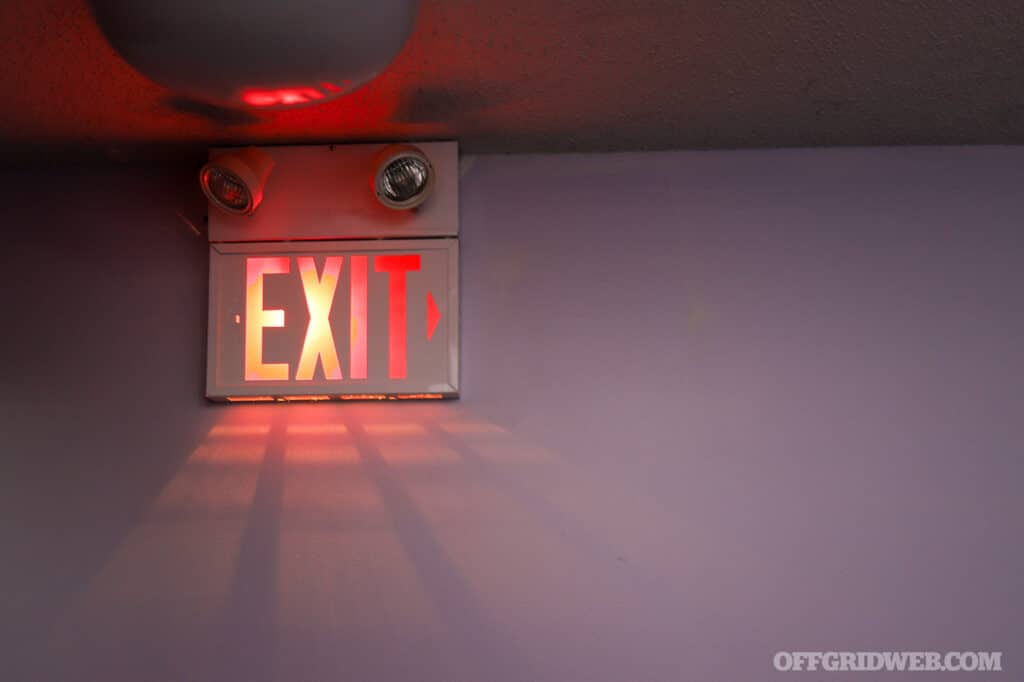
Always make note of emergency exits in every building you enter.
Egress Points
It’s important that any time you enter places like a restaurant, store, or movie theater that you make note of points of egress. If things go sideways for some reason, most people will head toward the door through which they came in. It’s a better plan to avoid that crowd when bugging out, if possible. Some egress points will be obvious, like clearly marked emergency exits.
Others might not be out in the open, but logic dictates their presence. For example, restaurants almost always have a back door in the kitchen through which they receive deliveries. In a pinch, windows might also serve as egress points, assuming you’re not several floors up.
This need to find an exit strategy applies to outdoor venues as well. Let’s say you’re attending a concert. Depending on the situation, heading directly for the stage with plans to find the exits on the other side might be feasible, rather than battling the crowds headed to the parking lot.
The point here is simple. Know where you’re going to head if something goes south.
Again, though, the need for evacuation might not be violence related. While that’s what we might often envision, what with so many news reports of mass shootings and such, the reality is that it could be any number of things that cause the need to bug out.
Noting egress points is part and parcel of situational awareness. Being fully present when you’re out in the world is critical. This doesn’t mean everyone has to approach life like Jason Bourne and notice every single detail about every single person encountered each day. What it does mean is that paying more attention to your social media feed than to the world around you is a recipe for disaster.
Baselines
Another aspect of situational awareness is establishing a baseline. This refers to how things are supposed to normally appear. Anything outside the norm should be an alert signal. Here’s a simple example. Let’s say you’re having lunch at a sidewalk café. The sidewalk is crowded with everyone seemingly in a hurry to get to where they’re going. But then you see one lone male subject just standing in the middle of the sidewalk. He’s staring off into nowhere, not moving.
He’s also wearing a heavy jacket, even though it’s 75 degrees F and sunny. He might be a terrorist building up the courage to ruin everyone’s day. Of course, he might also be experiencing a seizure or dealing with some other sort of medical event. Either way, you might want to bug out of the area and alert someone that this individual needs some help.
This notion of a baseline can even help with noticing possible improvised explosive devices (IEDs). According to the Cybersecurity and Infrastructure Security Agency (CISA), the acronym HOT can help you determine if a found object, such as a duffel bag, is a potential risk. If these elements are present, vacate the area with extreme caution and alert the authorities.
- Hidden – an attempt has been made to conceal the item. Maybe it’s loosely covered by garbage or it’s on the ground behind a pillar.
- Obviously Suspicious – it looks dangerous. It might have wires sticking out or otherwise just plain looks like a bomb.
- Not Typical – it violates the baseline you’ve established for the area. It’s obviously out of place and doesn’t belong there.
Keep Your Head Up
There are several advantages to paying close attention to what’s going on around you. For starters, you’ll be in a better position to notice and react to red flags and bug out if needed. You’ll be able to see most threats coming and deal with them in whatever way necessary.
On top of that, someone who walks around with their head up and on a swivel is less likely to be seen as a target by those who prey upon others. This means you won’t be late for your lunch date, which keeps everyone happy.
About the Author
Jim Cobb is a nationally recognized authority on disaster readiness. He has been involved with preparedness for nearly 40 years and has developed a reputation for his common-sense approach to the subject. In addition to his numerous books and several hundred magazine articles, Cobb is one of the cohosts of the How to Survive 2025 podcast. He offers a free weekly newsletter called The Survival Weekly Dispatch
Read More
Don’t miss essential survival insights—sign up for Recoil Offgrid’s free newsletter today!
- Bug Out Bag List of Essentials
- Bayou Bug-Out Bag: A Vehicle Emergency Kit for Louisiana Wetlands
- Overland: Project Guide to Offroad, Bug Out and Overlanding Vehicles
- Toughest AR-15 Upper: Apocalypse-proofing Your Bugout Carbine
Check out our other publications on the web: Recoil | Gun Digest | Blade | RecoilTV | RECOILtv (YouTube)
Editor’s Note: This article has been modified from its original version for the web.

